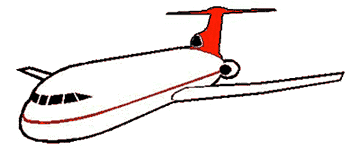FAIT Phobia Therapies
(FPT's)


Symptoms of a phobia include the following:
One behavioral technique that has been adopted relatively recently involves intensive exposure to the phobic stimulus either through imagery or in vivo. In imaginal flooding (implosion therapy), patients are exposed to phobic anxiety produced by images of the phobic stimulus for as long as they can tolerate the fear until they reach a point at which they can no longer feel the fear. In vivo flooding requires patients to experience similar anxiety through an exposure to the actual phobic stimulus itself.
Exposure therapies have proven effective for a variety of phobic conditions. However, traditional exposure therapies are also costly, in terms of therapist time and logistics. A patient's confidentiality, hesitancy and potential for embarassment are additional limiting factors for final-stage in-vivo exposure therapies.
Virtual Reality exposure therapy has provided an effective alternative to costly traditional exposure therapies, for several reasons:
In Fear-of-Flying therapy, the patient is strapped into a typical airline seat (augmented with hydraulics and vibration transducers to simulate realistic flight sensations) and fitted with a head-mounted display with omni-directional headphones. The resulting combination of interfaces enables a convincing air-travel simulation.
Lumbar support is provided where none is indicated, and temperature and humidity deprivation levels are regulated to add realism to the in-flight experience. Dry-roasted peanuts are served with a minimal amount of corresponding beverage. The sign is flashed intermittently throughout the flight, and occasionally oxygen masks drop from overhead panels, with accompanying alarm klaxons sounding from the forward section. Autonomous stewardess agents are programmed with realistic behaviors, simulating a range from "sticky sweetness" to "total indifference". An "abject horror" behavior algorithm has been added for additional realism during "rocky-flight" simulations. The combination of the above simulation parameters slows subjective exposure time, resulting in real-time treatment sessions lasting only 2/3 of apparent elapsed time.
Physical sensations during taxiing and accompanying takeoff are efficiently simulated by the viration transducers mounted to the subject's seat, faithfully reproducing every little patch of asphalt, every pebble and stray bolt on the runway. After a few false starts, the plane lifts off the ground at a steep angle, forcing the patient back in his seat with the aid of the hydraulics. The climbing phase lasts for ten minutes or so, then the seat once again resumes a more or less level attitude. Turbulence simulations often occur randomly during this early stage of flight, triggering a realistic "worried" look on the faces of the cabin crew automatons.
In mid-flight, ball lightning travels from the wingtips through the fuselage as the sound of pelting hailstones fills the cabin. Passengers groan and become ill as crew members collect "air discomfort" bags at an alarming rate. Finally, the sign is lit one last time, and the plane begins its descent. After announcing an ETA of ten minutes, the pilot guides the plane into a holding pattern over a massive cloud bank, where it remains for approximately forty-five minutes.
Finally, the plane is in position for its final descent. Just as the wheels screech into contact with the runway, the hydraulics in the chair begin a violent side-to-side motion which is not reinforced in the visual cue system. This motion slows and recedes as the plane nears the terminal building. When the call comes over the loudspeaker to remove seatbelts and disembark, all the other passengers rise and clog the aisles immediately, forcing the subject to wait for an exasperating period before being removed from the simulation.
If the subject shows signs of impatience during the pre-flight delay, virtual infants are seated on all sides. If, during the post-flight disembarking, the subject shows signs of aggression, panic or frustration, an announcement comes over the loudspeakers reminding all remaining passengers to stay in their seats for the continuing flight to Saskatchewan, and the simulation is resumed.
Since the goal of FPT is to loosen the subject's grip on habitual phobic behaviors, positive inducements are offered during the virtual flight to encourage the subject to relax in the face of what may otherwise seem to be impending doom. Muscle tension sensors are mounted in the armrests of the passenger seat, pupil-dilation is metered in the HMD by infrared detectors, and capillary pulse measurement is obtained via optics in the headphones, giving feedback to the Sadometrically-based monitoring system about the subject's discomfort levels. The system compares incoming values to those stored during earlier Leviatron analysis, removing the need for subjective evaluations by human therapists during the session.
When desireable emotional states are maintained by the subject, the simulation engine responds favorably. The system offers rewards such as allowing the subject to actually listen to the sound of the in-flight movie, reclining the seat, or raising the humidity to near-normal levels when the subject demonstrates sustained conscious control over the phobic behaviors.